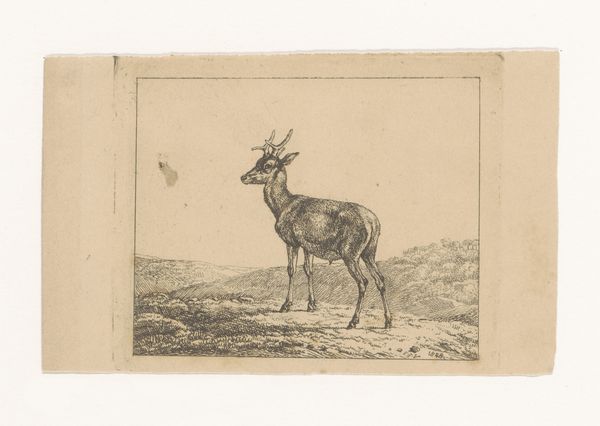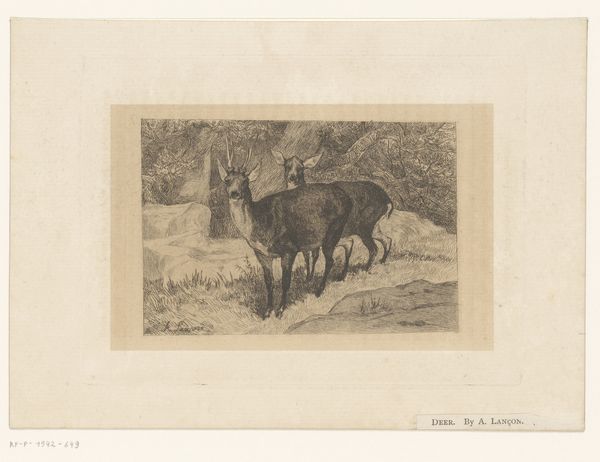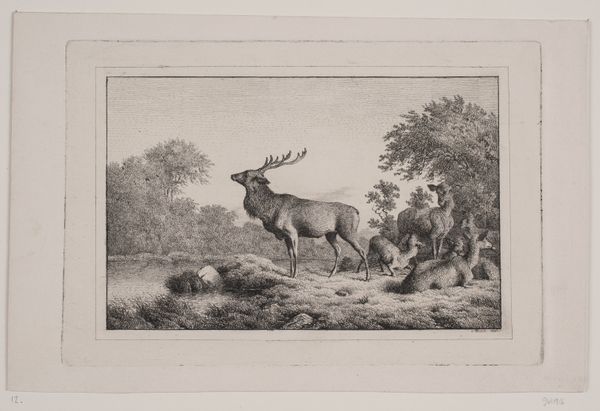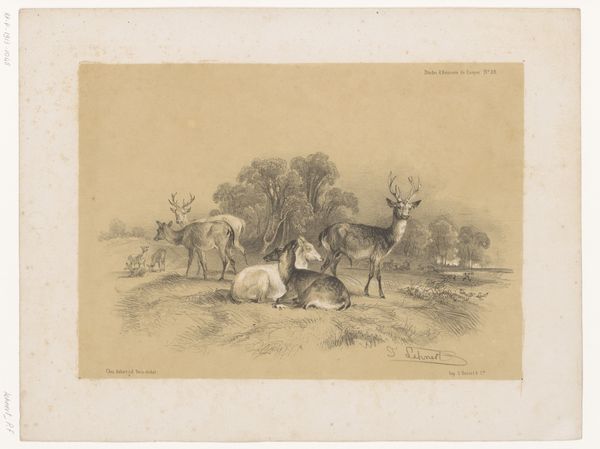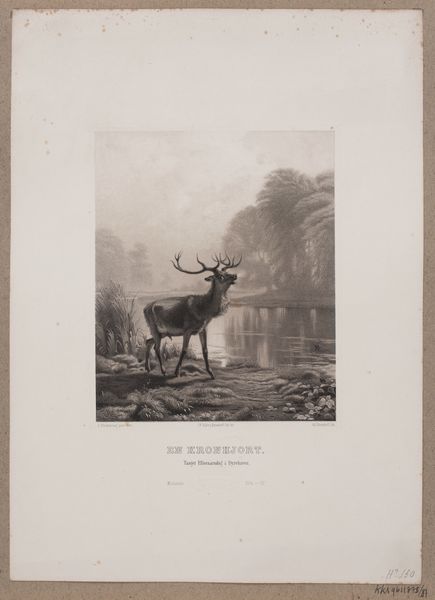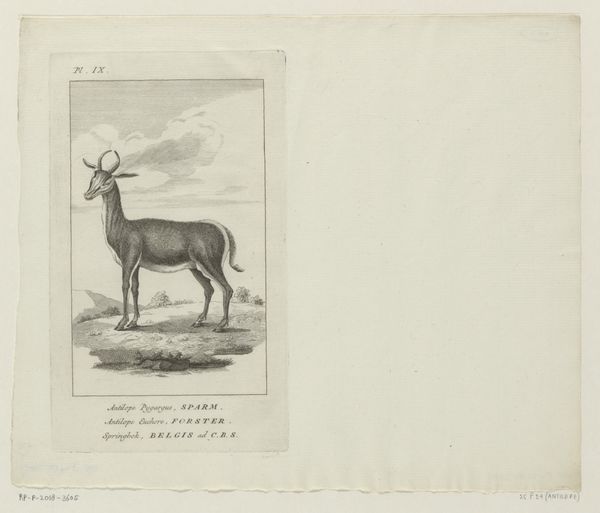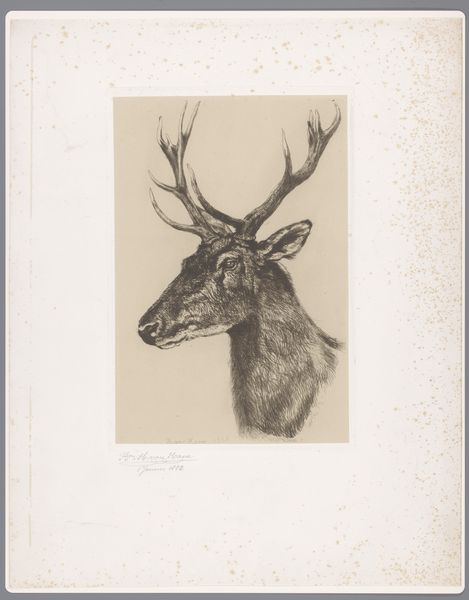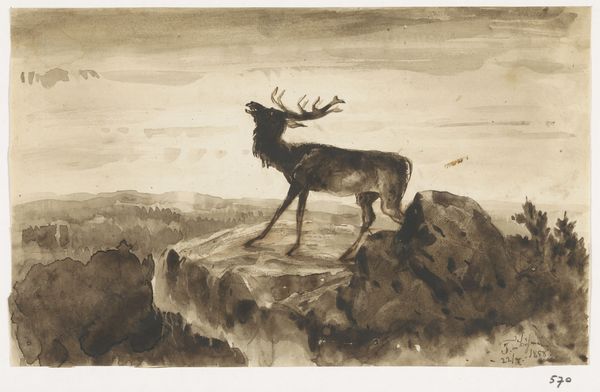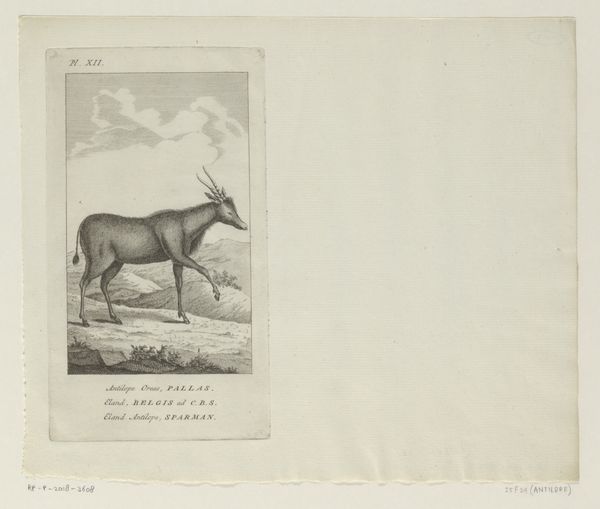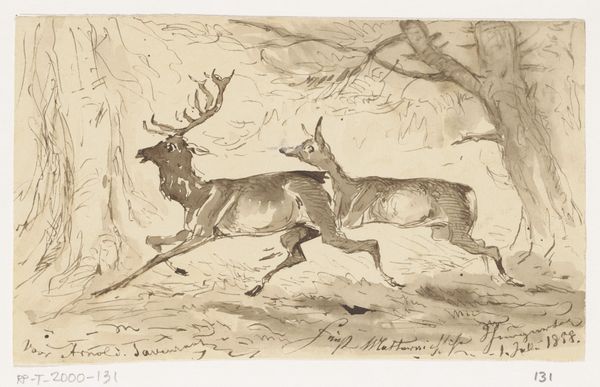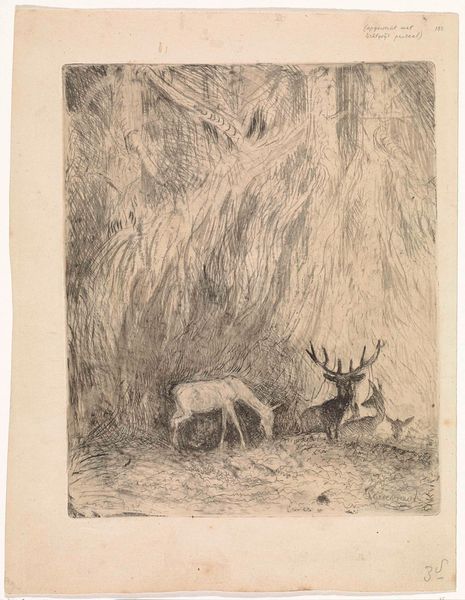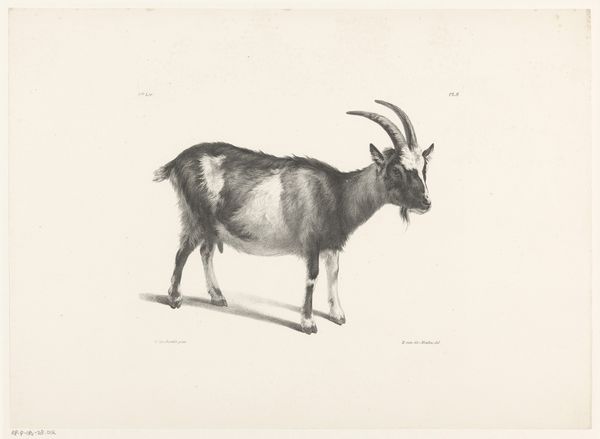
drawing, print, graphite
#
pencil drawn
#
drawing
# print
#
landscape
#
graphite
#
realism
Dimensions: height 265 mm, width 353 mm
Copyright: Rijks Museum: Open Domain
Curator: We're standing before Frederik Hendrik Weissenbruch's "Hert in landschap," which translates to "Deer in Landscape." The print, rendered in graphite, dates somewhere between 1838 and 1863. It's quite a serene tableau, wouldn't you agree? Editor: Serene is one word for it; "brooding" also comes to mind. The somber palette, the solitary stag… it has a distinctly melancholic air. I almost hear the echo of its lonely call in the silence of this landscape. Curator: The stag, as a symbol, frequently embodies solitude and nobility, and certainly aligns with prevalent themes in Romanticism and early Realism, the movements Weissenbruch worked within. Considering its gaze and imposing antlers, would you say that this is the defining symbol of masculinity in nature? Editor: Masculinity, absolutely, but not in a showy, performative way. It feels more like quiet strength and resilience. There’s a stillness in its gaze. You know, I feel more connected to a wild untamed, vulnerable essence through his depiction than of any traditional portrayal of masculine confidence and poise. Curator: It’s remarkable how Weissenbruch uses simple graphite to evoke such complex feelings. Observe the textural contrast—the soft foliage against the smooth water, the detailed fur of the stag compared to the blurred distant mountains. It is truly the only colour, though—how does that impact you, emotionally? Editor: The limited palette emphasizes the contrast between light and shadow, enhancing the emotional intensity of the piece. I wonder if that’s also why the work elicits some of that melancholy that I sensed at first—the darkness versus the light… Is there something we’re missing in our emotional response, like hope in this wilderness? Curator: I agree, though his choices weren’t merely emotional. Remember, 19th-century realism strived for objective representation, a visual inventory of the world, uncolored by sentiment. It seems as if the aim wasn’t an expression of feelings but the rendering of the seen object with painstaking honesty, which makes the fact that this artwork provokes our discussion even more intriguing. Editor: "Painstaking honesty"... Yes! Perhaps it is Weissenbruch’s honesty in conveying the deer's quiet strength, and the vastness and indifferent reality of nature that make the image so gripping. It avoids easy sentimentality by remaining faithful to the harsh elegance of its subject. Curator: Perhaps both our perspectives aren't as dissimilar after all. Seeing an echo of the real reflected so starkly back in graphite. Editor: Or perhaps feeling seen. It's like glimpsing your own reflection, vulnerable but strong, in the depths of that solitary stag.
Comments
No comments
Be the first to comment and join the conversation on the ultimate creative platform.
